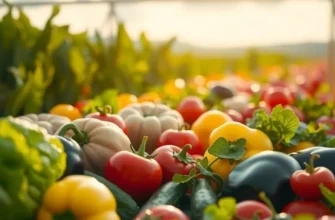Egg separation is a fundamental skill in cooking that can elevate your dishes and improve your baking techniques. Whether you’re whipping up a delicate meringue, making a rich custard, or just need egg whites for a healthy omelet, knowing how to separate eggs efficiently will save you time and hassle. With a few practical tips and tricks, anyone can become adept at this technique, regardless of their cooking experience. Let’s dive into some effective methods for egg separation that will streamline your kitchen workflow.
The Traditional Hand Separation Method

For many home cooks, the traditional hand separation method is an opportunity to connect with the ingredients. This tactile technique is timeless, efficient, and requires nothing but your hands and a little confidence. Whether you are preparing a fluffy meringue or a silky custard, mastering hand separation will elevate your culinary skills.
Step 1: Preparing the Workspace
Start with a clean, flat surface and ensure you have two bowls: one for egg whites and another for yolks. Set them close together to minimize movement.
Step 2: Cracking the Egg
Gently tap the egg on a flat surface, not the edge of a bowl, to avoid shell fragments. With a subtle crack, hold the egg over one of the bowls and use your thumbs to split the shell open into two halves.
Step 3: Separating Whites from Yolks
As you open the shell, let the yolk settle into one half of the shell. Let the white drip into the bowl by tipping the shell halves, moving the yolk back and forth gently. The key is to avoid breaking the yolk, preventing it from mixing with the white.
Step 4: Transferring the Yolk
Once most of the white has separated, transfer the yolk to the other half of the shell once more to catch any remaining white. When no more whites drip, place the intact yolk in the second bowl.
Step 5: Handling Accidents
If yolk breaks or separates incorrectly, don’t worry. It’s a skill refined over time. Practice makes perfect. You may discard any contaminated whites if making a recipe sensitive to yolk presence, like meringue. Consider using those slightly tinted whites for scrambled eggs or non-sensitive dishes.
Hand separation is a simple method that contrasts with more mechanized kitchen experiences. Besides offering a tactile, almost meditative process, it promotes a zero-waste approach by reducing the need for additional tools. For insights on sustainable kitchen practices, explore reducing dietary ecological harm.
Appreciating the elegance of a technique that does not rely on fancy gadgets can truly enhance your cooking prowess. Embrace the traditional hand separation method, and with each egg, you will find yourself more attuned to the rhythm of your kitchen endeavors.
Using Gadgets for Quick Separation

Mastering the art of egg separation can elevate your culinary prowess significantly. Whether you’re a seasoned chef or a home cook, utilizing kitchen gadgets can streamline the process and minimize the mess. Several tools are crafted specifically to separate eggs efficiently. Let’s explore how to use these gadgets effectively.
The most straightforward tool is the humble egg separator. This gadget usually consists of a small bowl-like structure with slits or a sieve at the bottom. Its design allows the egg white to flow through the openings, leaving the yolk intact on top. To use it properly, start by cracking an egg into the separator positioned over a bowl. Ensure that the separator is placed correctly to let gravity do its job. This method is not only quick but also minimizes the risk of yolk breakage, which can be crucial for recipes that require clear separation.
For a more inventive solution, consider using a plastic bottle. This might sound unconventional, but it’s a surprisingly efficient trick. Begin by cracking an egg into a shallow bowl. Then, take an empty, clean plastic bottle, gently squeezing it to expel some air. Position the bottle opening over the yolk and slowly release the squeeze. This creates a vacuum effect, sucking the egg yolk into the bottle. It’s a fun technique that is especially mesmerizing for kids or when you want to impress guests with your kitchen savvy.
Besides these common gadgets, some advanced egg separators include suction-based devices that work similarly to the plastic bottle but are designed for repeated kitchen use. These tools often provide a better grip and control, making the separation process even more foolproof. When choosing such devices, look for ergonomic designs that will be comfortable to use repeatedly, especially if you’re preparing meals that require a large number of eggs.
In some cases, minimalism reigns supreme, and you might find yourself without any gadgets on hand. In such scenarios, using the eggshell itself is a traditional and handy method. Carefully cracking an egg and transferring the yolk back and forth between shell halves allows the white to fall away. It requires practice to avoid breaking the yolk, but mastering this skill can prove invaluable.
These tools and techniques can make your life easier, especially when planning meals that extensively use eggs, such as when preparing large batches of meringues or custards. Some recipes demand precision, and using the right tool can ensure that you meet these stringent culinary standards. To keep your kitchen running smoothly and efficiently, consider integrating these gadgets into your routine as part of your strategic meal prep. For further suggestions on optimizing your kitchen habits, check out some efficient grocery cycles that can complement your egg separation prowess here.
By incorporating modern kitchen gadgets into your cooking process, you not only enhance the experience but also add precision and efficiency, ensuring better results in your culinary endeavors. Now that you’re equipped with these strategies, you’re well on your way to mastering egg separation like a pro.
Final words
Perfecting the skill of egg separation opens up a world of culinary possibilities. Whether you choose the traditional hand technique or opt for modern gadgets, each method offers its unique advantages. The key is to practice and find which technique suits you best, enhancing your overall cooking experience. By mastering egg separation, you’re not just improving a skill; you’re elevating the quality of your dishes. Embrace the journey in your kitchen and enjoy the delightful results that come with your newfound confidence.







